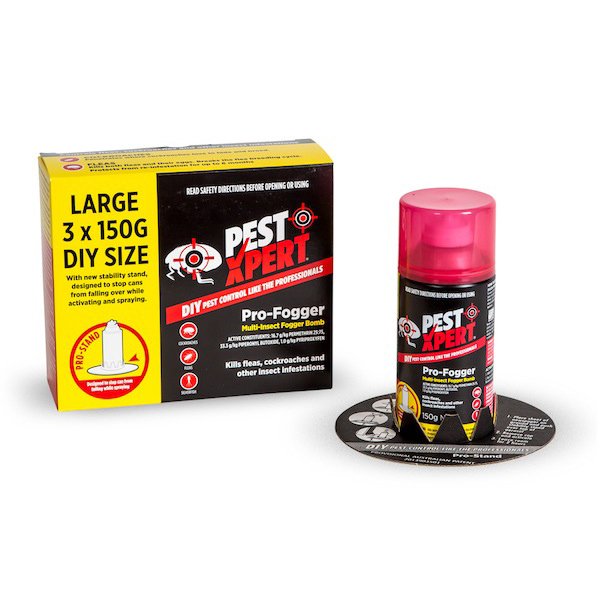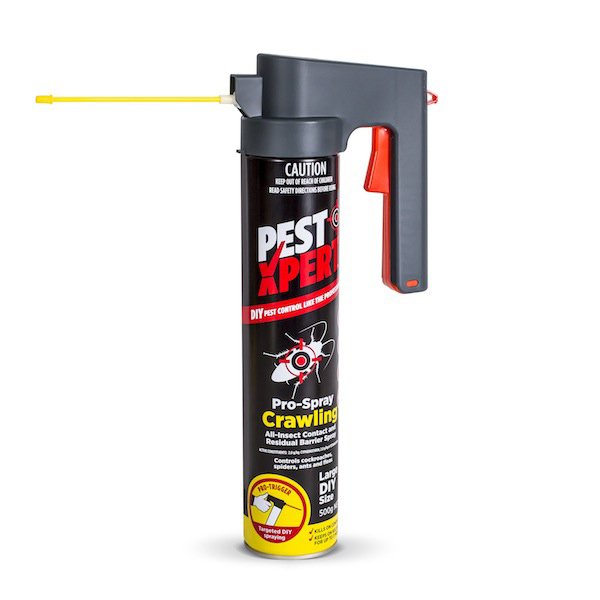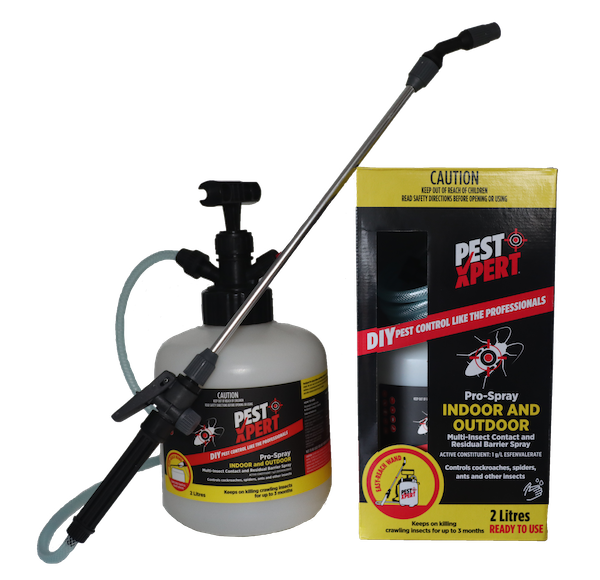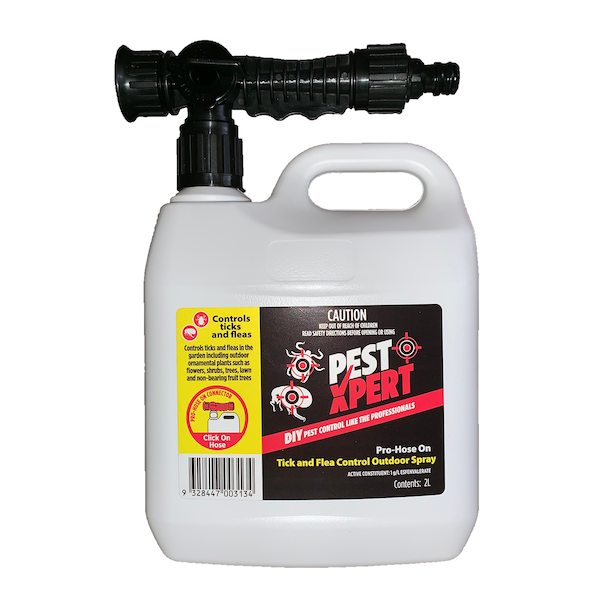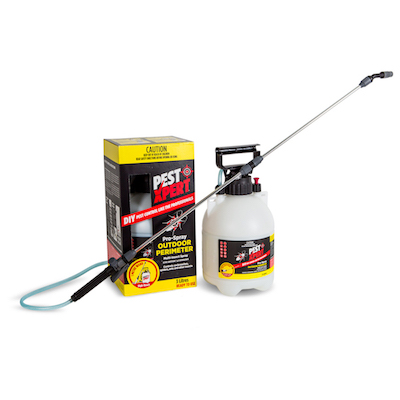Fleas & How to Control them
As pet owners, we know we might have an occasional flea problem. But if it gets out of control, it can be very stressful, as well as painful and itchy! In days gone by, fleas were a major concern with the transfer of disease – the bubonic plague or “black death”. Although disease transmission through flea bite in Australia is uncommon, they can transmit tapeworms and murine typhus. The good news is that there are some clear preventative measures, as well as control products for pets and your home, that allow you to get on top of any flea problem.
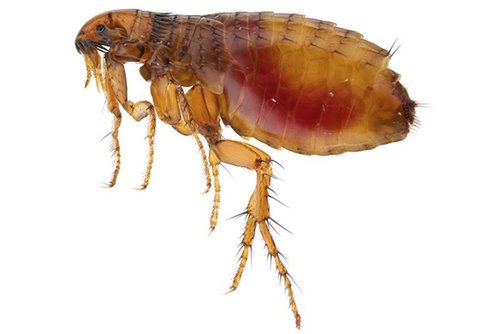
ADULT FLEA
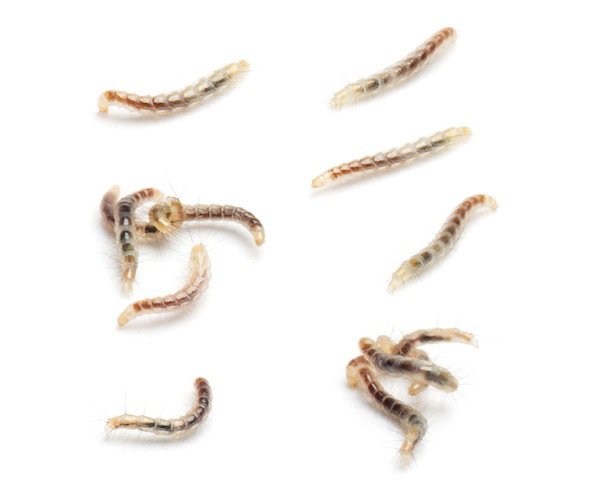
FLEA LARVAE
FLEA IDENTIFICATION
WHAT DO FLEAS LOOK LIKE?
- Flea eggs are white and about 0.5mm in diameter. Although they are laid on the host (cat or dog), they easily fall off, so can be found throughout the house, but particularly concentrated on the areas where the pet rests and sleeps.
- The larvae are white worm-like creatures with a few hairs. When they hatch they are 1-2mm long. The larvae go through 4 moults, getting darker and longer. By the time they are ready to pupate, they are up to 5mm long.
- Once the larvae is fully developed it spins a pupa. This white oval cocoon is sticky, so picks up dirt making it difficult to see. Under favourable conditions the adult will hatch in 5-14 days.
- Many people will see a small brown / dark brown spot (1.5 – 3mm) not sure what it is….. but when it jumps they may suspect a flea. Fleas are insects, so the adults have six legs, although they have no wings. The adults are thin to allow them to move easily through fur / hair on their hosts.
SIGNS OF AN INFESTATION
- The presence of fleas is often first detected if the cat or dog is continually itching or maybe a member of the household gets bitten. If steps are taken to get control at this stage, you may be able to prevent a major outbreak.
- Often the major outbreaks occur when families return from holidays. The flea population has got out of control in their absence and there are thousands of adult fleas waiting for a blood meal!
MAIN PEST SEASON
Summer is the main pest season for fleas. The larvae are prone to desiccation so require a warm humid environment to develop. However, in colder climates where heating is used throughout Winter, it is still possible to have a flea outbreak in the colder months.
FLEA FACTS
- Flea larvae require a warm humid environment to survive. Although they are common in the carpet and pet bedding, they also survive well outside in Summer in damp, sandy soils, in the shade. Any such sites which are visited by the pet (for example under the house or deck) could be a source of infestation.
- Flea pupae can remain dormant for many months, waiting for a potential host to walk by before emerging. They detect the vibrations of a passing animal before emerging from the pupa and jumping onto the host.
- Adult female fleas require a blood meal before laying eggs.
- Flea pupae are resistant to most consumer insecticides. After a treatment, pupae may continue to hatch for 2-4 weeks after treatment. This can sometime give the homeowner the impression the treatment has not worked. However, most of these adult fleas will pick up the residual insecticide on the carpet and subsequently die. (However, PestXpert Pro-Fogger is different).
FLEA PREVENTION TIPS
- Keep your pet flea treatments up to date.
- Ensure regular vacuuming of carpeted areas (including under furniture) and pet bedding.
- Exclude pets from sub-floor areas.
FLEA CONTROL TIPS
If you have a flea infestation, you need to get rid of fleas fast!
Whether you have just one or two fleas or a major infestation, you need to be thorough. There are no short cuts to a flea treatment as you never know where the eggs, larvae and pupae may be hiding. One or two fleas can turn info a major infestation before you know it!
Pestxpert have a tried and tested 5-step process to carrying out a flea treament.
Get rid of fleas with the 5-step Process
Step 1: The clean
If you have a suspected flea outbreak, the first steps are to vacuum the whole house (carpeted areas, timber and tile floors and furniture). Make sure you clean under furniture, down cracks in furniture and around edges of room. Immediately bag the contents of the vacuum cleaner in a sealed plastic bag and place in the garbage.
Step 2: The wash
Wash all bedding, furniture coverings, clothing, rugs, that can be washed in a washing machine in a hot wash cycle. Another option is to place such items in sealed black plastic bags in the sun for 1-2 hours – the heat kills all flea life stages. If you are unsure whether the fabric cannot be washed or tolerate temperatures to 70ºC, then leave the items in place and carry out a flea treatment (Step 4).
Step 3: Treat affected pets
Treat pets with an appropriate flea treatment as recommended by your vet. (Not keeping your pet flea treatment up to date is one of the key causes of flea outbreaks).
Step 4: Treat inside the home
Carry out a flea treatment inside the home. You can call a professional pest controller to carry out a treatment, but homeowners can buy the necessary products in their local hardware store to carry out the treatment themselves (at a significant saving).
Treat all rooms where the pets have been with a flea bomb or flea fogger. These products are also called total release aerosols, as once activated they release all the product in one go. The fine mist floats into all but the most protected dead spots. To maximize performance open all cupboards and drawers and remove any items that may restrict airflow.
When using flea bombs is it vital that the label is ready carefully and that all safety instructions are followed. Key standard instructions include;
- Remove any clothing items, exposed food, food utensils
- Remove all pets and plants
- Cover fish tanks
- Turn off all sources of ignition (flames, pilot lights, electricity) prior to use
- Turn off or cover smoke detectors
- Turn off fans and air-conditioners
- Close all doors and windows to the treatment room, prior to use.
- Leave the room immediately after starting the flea bomb
- Stay out of the treatment room for 2 hours after use
- Air the room following treatment
- Wipe down all surfaces
- Vacuum up dead insects
- Turn on smoke detectors
Some flea bombs do not penetrate the flea pupae, so sometimes there may be a minor outbreak 1-2 weeks after treatment when these adult fleas emerge, although these are quickly controlled by the residual insecticide in the carpet.
For any spot treatments or “dead” spots where you believe the mist from the flea bomb may not have reached, use an insecticide spray (aerosol or pump pack) that is registered for flea use, such as PestXpert Pro-Spray Indoor and Outdoor or PestXpert Pro-Spray Crawling.
Step 5: Treat outside the home
This is the step many homeowners miss and a common reason for re-infestation.
Treat any outdoor areas where your pet likes to rest. Often these are cool, sandy places in the shade…. just the places flea larvae also prefer. PestXpert Pro Hose-On Tick and Flea is the easy way to treat large areas. For small areas, PestXpert Pro-Spray Outdoor Perimeter is also an option. Make sure the pest are kept clear during treatment and are kept clear until the treatment is dry. Ideally any sub-floor areas should designed to prevent pet access.
It takes a bit of effort, but doing it right first time will ensure you get rid of the flea quickly and do not need to a do a re-treatment.
PESTXPERT FLEA PRODUCTS
To successfully get rid of fleas, you need to carry out a comprehensive flea treatment, which includes a range of actions and requires a number of different products. PestXpert has a range of products to provide excellent flea control.
The first step in controlling fleas in the home is to use the Pro-Fogger total release aerosol. Release one aerosol per room to provide complete coverage. The unique formulation uses three actives to penetrate pupae and eggs to maximise control. The stabilising stand ensures the aerosol does not fall over in use. Ensure all safety instructions are read before use. For non-carpeted rooms, instead of a flea bomb you may want to consider a perimeter spray (also spray in any cracks in the floor boards).
To hit any dead spots (such as under furniture), use Pro-Spray crawling aerosol or Pro-Spray Indoor and Outdoor to finish the interior treatment.
Treat external pest resting areas with Pro Hose-On Tick and Flea or Pro-Spray Outdoor perimeter. Allow to dry before pets can return.
MORE INFORMATION
Check out our blog articles for more information

